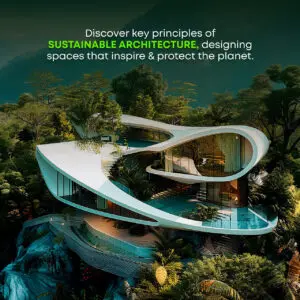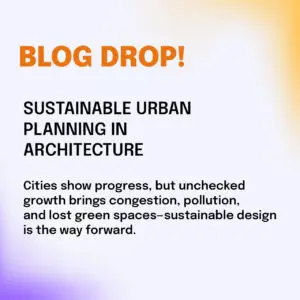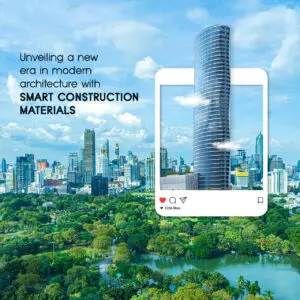
A global trend in the wide domain of architecture is ‘sustainable architecture’. What exactly does it refer to? This genre seeks to minimize the negative environmental impact of buildings by efficiency and moderation in the use of materials, energy, development space and the ecosystem at large.
In the year 1987, the United Nations commissioned The Brundtland Report – ‘Our Common Future’ that described sustainable development as ‘one that meets the needs of the present without compromising the ability of future generations to meet their own needs’. Today, decades later, this definition stands more than relevant against the context of climate change and the drive to protect our Mother Earth. For example, builders worldwide have today reimagined workspaces using natural lights, shifted garden spaces to vertical garden walls and committed themselves to save water through the process of recycling.
Hugely relevant today
Although the concept of green buildings was introduced in the early 1970s to essentially combat rising petroleum prices, sustainable architecture as we understand it today, involves every aspect of the lifecycle of the buildings such as design, construction, operations, maintenance and renovation, including the end-of-life stage when the materials can be retrieved and recycled. It even entails the conservation of the immediate environment around the building site. While being functional and aesthetically superior, eco-friendly forms of architecture such as green buildings also have to be constructed with the singular mindset of achieving energy and resource efficiency.
Benefits galore
Let us enlist some of the futuristic advantages offered by sustainable architecture:
- Conservation of the environment: A healthier environment is carved for the future with the employment of non-toxic paints, thinners and all-natural building materials. High performance construction is prioritized with low maintenance and long-term durability, thereby ensuring conservation of the immediate surroundings.
- Reduction in energy consumption: The shift to renewable energy systems, energy-efficient equipment, water-saving methods, rainwater harvesting and using natural lighting systems takes projects closer to their ‘Net Zero energy’ as well as low carbon footprint goals.
- Better quality of living: The art of renovation, rehabilitation and constant adaptive re-use, building with local and organic materials, smart energy-saving technologies, resilient buildings built to withstand floods and storms, and invisible buildings designed to seamlessly blend with the natural landscape all go a long way in bolstering the overall standard of living.
- Improvement of productivity in dwellers: Ongoing research states that employees or dwellers who work or live in green buildings have exhibited greater productivity. As a case study, after implementing green building features at Sherwin-Williams’ Centro-America headquarters in El Salvador, the company saw a 68% reduction in reported respiratory problems and a 64% reduction in reported allergy problems vis-a-vis their own workforce. “Additionally, since moving to the new building, employee absenteeism has reduced by 44%, and Sherwin-Williams has calculated a total annual saving of $85,000 annually.
Our institute has an eye on the future
As a leading engineering college in West Bengal, the NAAC-accredited and MAKAUT – affiliated OmDayal Group of Institutions has an impeccable track record of churning out young architects possessing a zeal for creativity and innovation. The industry-centric B.Arch course encourages the students to innovate and create projects that are compliant to all the modern and internationally-acclaimed architectural regulations and standards.
Bearing in mind the competitive market and the demands of sustainable architecture both in India and abroad, our college is reputed for continuously upgrading its teaching and learning curriculum in sync with global standards, to empower each and every student with a competitive edge as new-age technology professionals. Our facilities like flexible timings and partnership with National Small Industries Corporation (NSIC) to provide on-job training and excellent placement opportunities have helped our students greatly in their successful career pursuits to emerge as top-notch architects in the future.
For more information, visit www.omdayal.com




